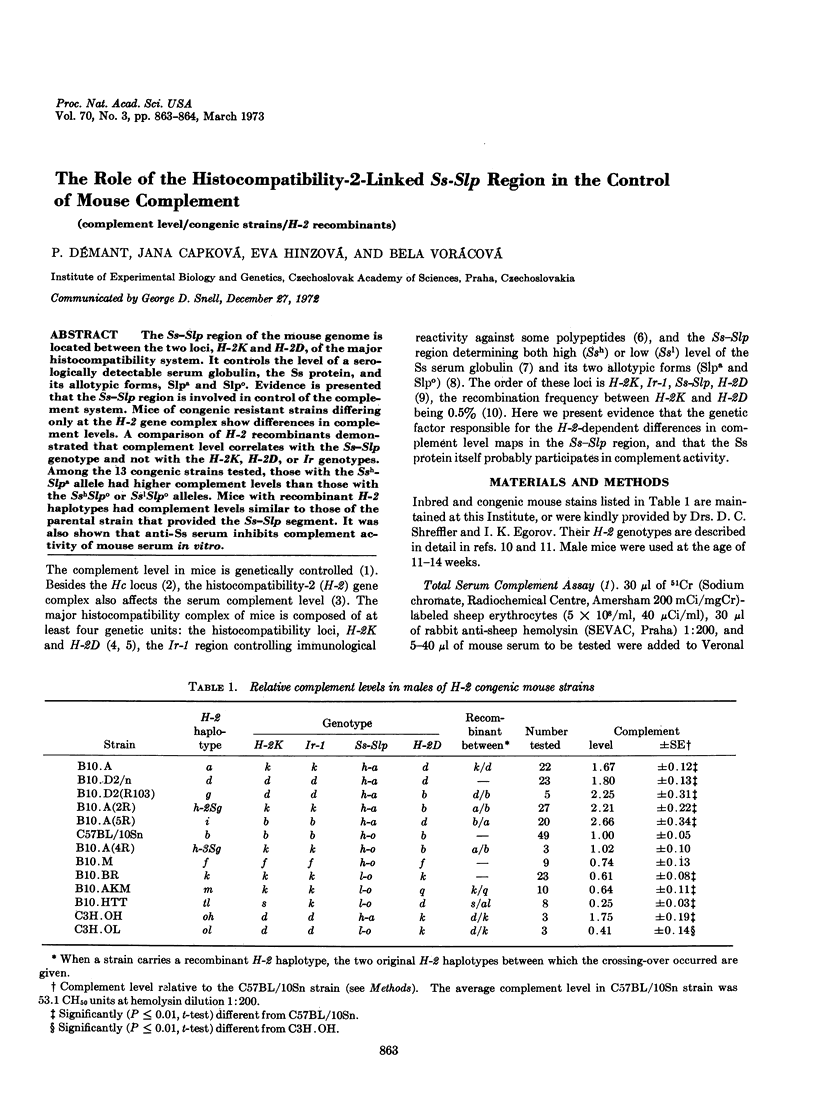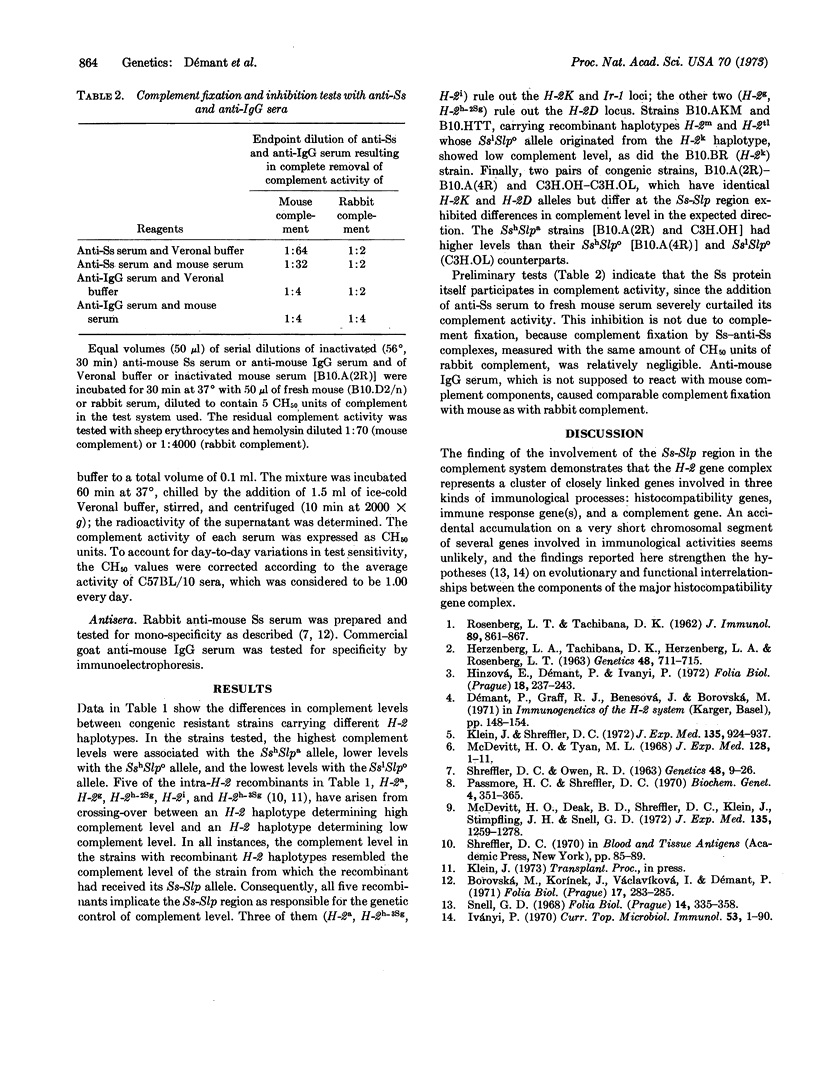Abstract
The Ss-Slp region of the mouse genome is located between the two loci, H-2K and H-2D, of the major histocompatibility system. It controls the level of a serologically detectable serum globulin, the Ss protein, and its allotypic forms, Slpa and Slpo. Evidence is presented that the Ss-Slp region is involved in control of the complement system. Mice of congenic resistant strains differing only at the H-2 gene complex show differences in complement levels. A comparison of H-2 recombinants demonstrated that complement level correlates with the Ss-Slp genotype and not with the H-2K, H-2D, or Ir genotypes. Among the 13 congenic strains tested, those with the SshSlpa allele had higher complement levels than those with the SshSlpo or SslSlpo alleles. Mice with recombinant H-2 haplotypes had complement levels similar to those of the parental strain that provided the Ss-Slp segment. It was also shown that anti-Ss serum inhibits complement activity of mouse serum in vitro.
Keywords: complement level, congenic strains, H-2 recombinants
Full text
PDF

Selected References
These references are in PubMed. This may not be the complete list of references from this article.
- HERZENBERG L. A., TACHIBANA D. K., HERZENBERG L. A., ROSENBERG L. T. A gene locus concerned with hemolytic complement in Mus musculus. Genetics. 1963 May;48:711–715. doi: 10.1093/genetics/48.5.711. [DOI] [PMC free article] [PubMed] [Google Scholar]
- Hinzová E., Démant P., Iványi P. Genetic control of haemolytic complement in mice: association with H-2. Folia Biol (Praha) 1972;18(4):237–243. [PubMed] [Google Scholar]
- Iványi P. The major histocompatibility antigens in various species. Curr Top Microbiol Immunol. 1970;53:1–90. [PubMed] [Google Scholar]
- Klein J., Shreffler D. C. Evidence supporting a two-gene model for the H-2 histocompatibility system of the mouse. J Exp Med. 1972 Apr 1;135(4):924–937. doi: 10.1084/jem.135.4.924. [DOI] [PMC free article] [PubMed] [Google Scholar]
- McDevitt H. O., Deak B. D., Shreffler D. C., Klein J., Stimpfling J. H., Snell G. D. Genetic control of the immune response. Mapping of the Ir-1 locus. J Exp Med. 1972 Jun 1;135(6):1259–1278. doi: 10.1084/jem.135.6.1259. [DOI] [PMC free article] [PubMed] [Google Scholar]
- McDevitt H. O., Tyan M. L. Genetic control of the antibody response in inbred mice. Transfer of response by spleen cells and linkage to the major histocompatibility (H-2) locus. J Exp Med. 1968 Jul 1;128(1):1–11. [PMC free article] [PubMed] [Google Scholar]
- Passmore H. C., Shreffler D. C. A sex-limited serum protein variant in the mouse: inheritance and association with the H-2 region. Biochem Genet. 1970 Jun;4(3):351–365. doi: 10.1007/BF00485752. [DOI] [PubMed] [Google Scholar]
- ROSENBERG L. T., TACHIBANA D. K. Activity of mouse complement. J Immunol. 1962 Dec;89:861–867. [PubMed] [Google Scholar]
- Shreffler D C, Owen R D. A Serologically Detected Variant in Mouse Serum: Inheritance and Association with the Histocompatibility-2 Locus. Genetics. 1963 Jan;48(1):9–25. doi: 10.1093/genetics/48.1.9. [DOI] [PMC free article] [PubMed] [Google Scholar]
- Snell G. D. The H-2 locus of the mouse: observations and speculations concerning its comparative genetics and its polymorphism. Folia Biol (Praha) 1968;14(5):335–358. [PubMed] [Google Scholar]


